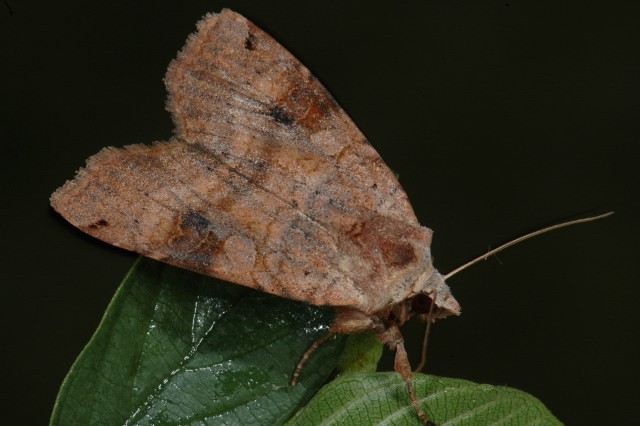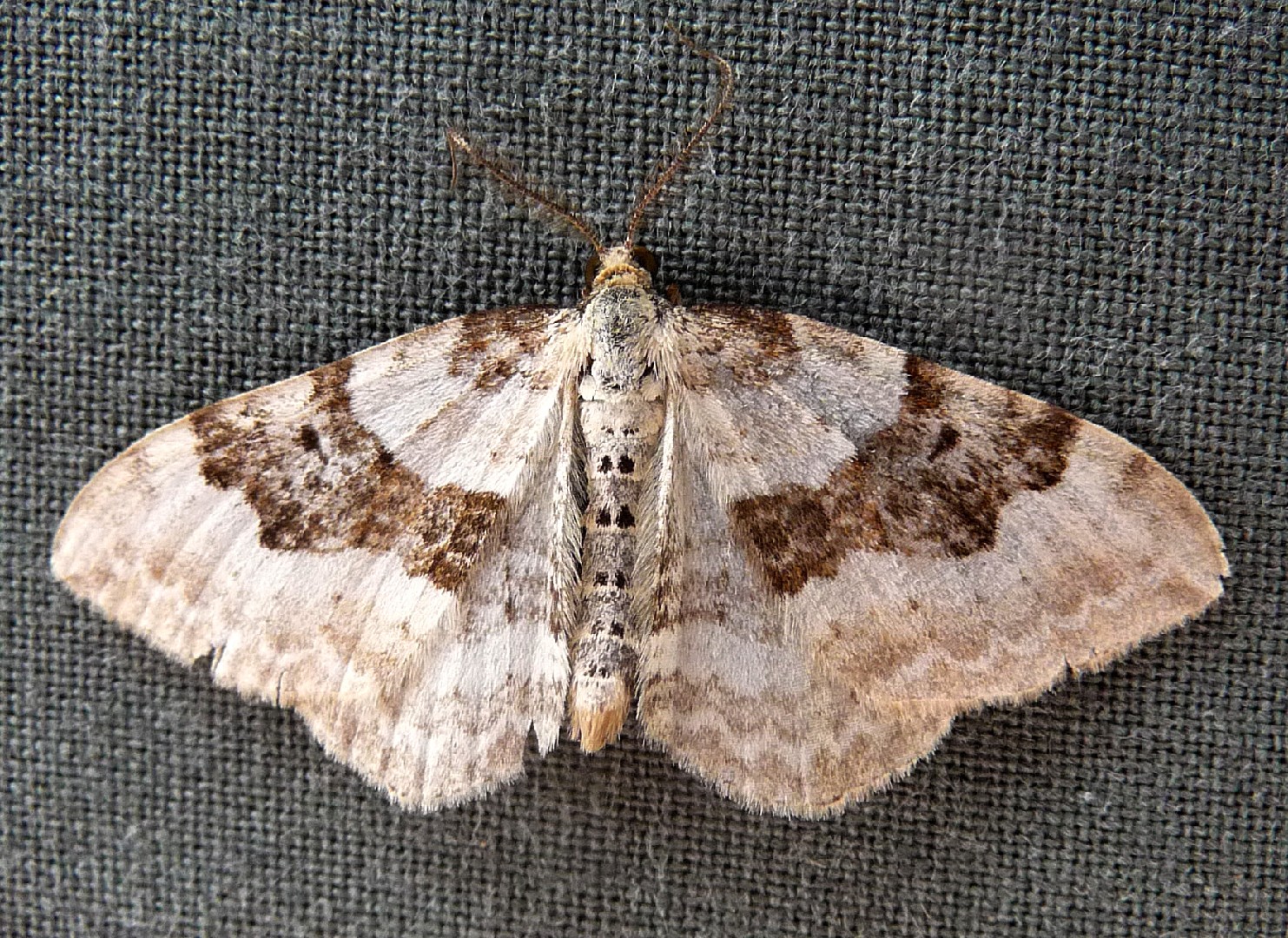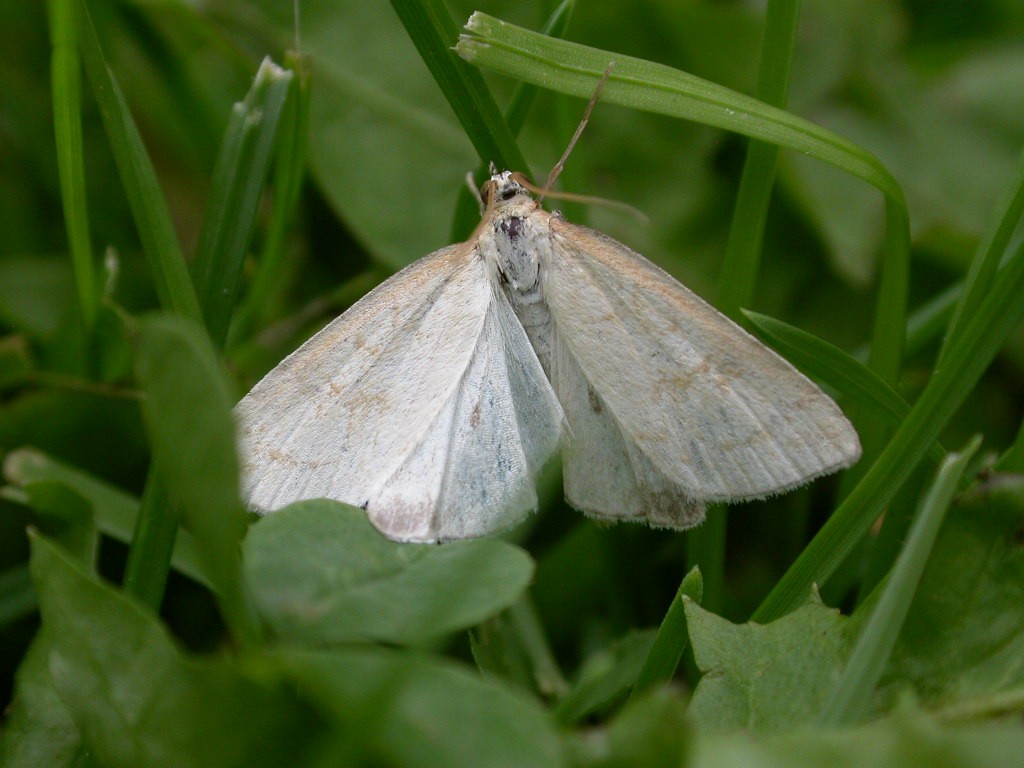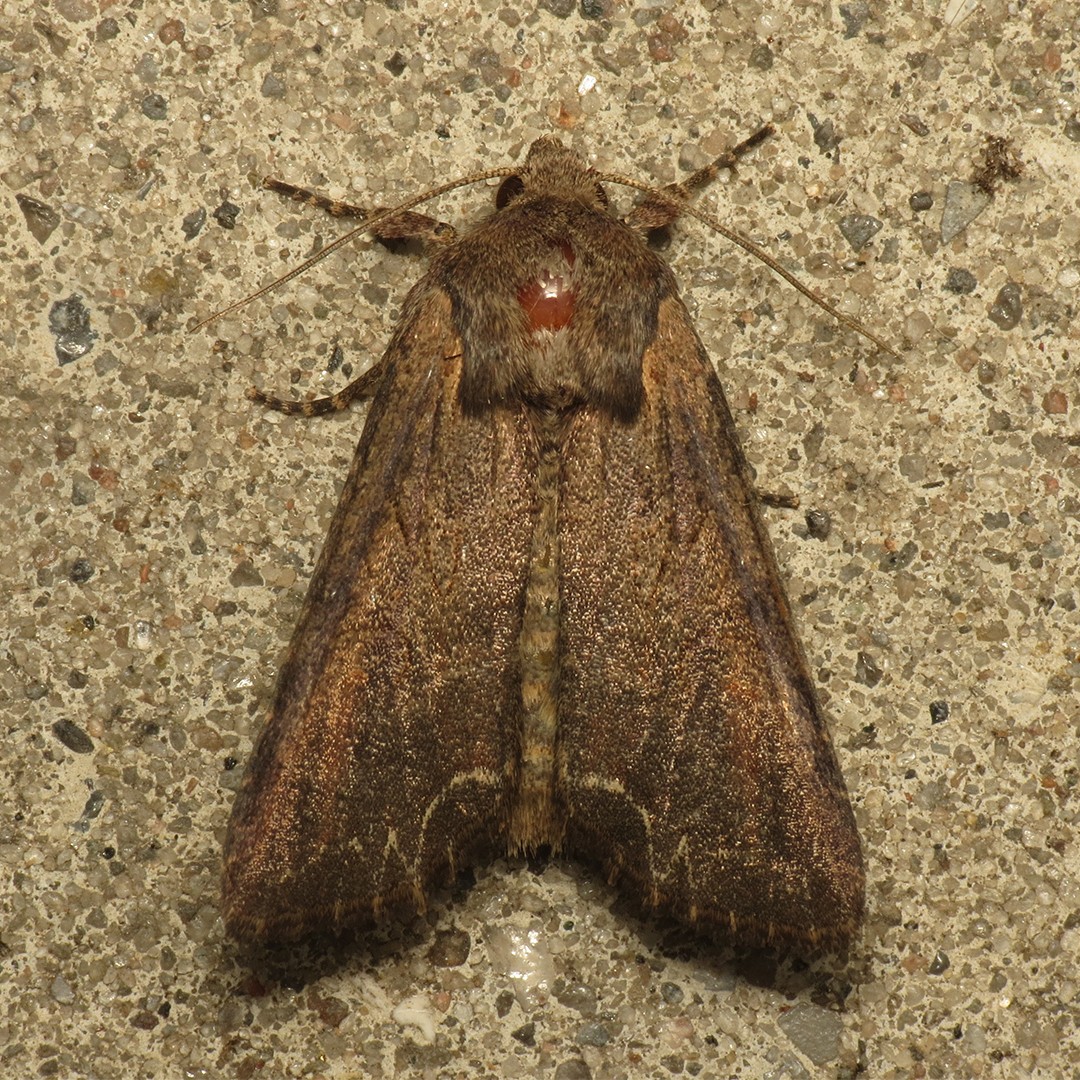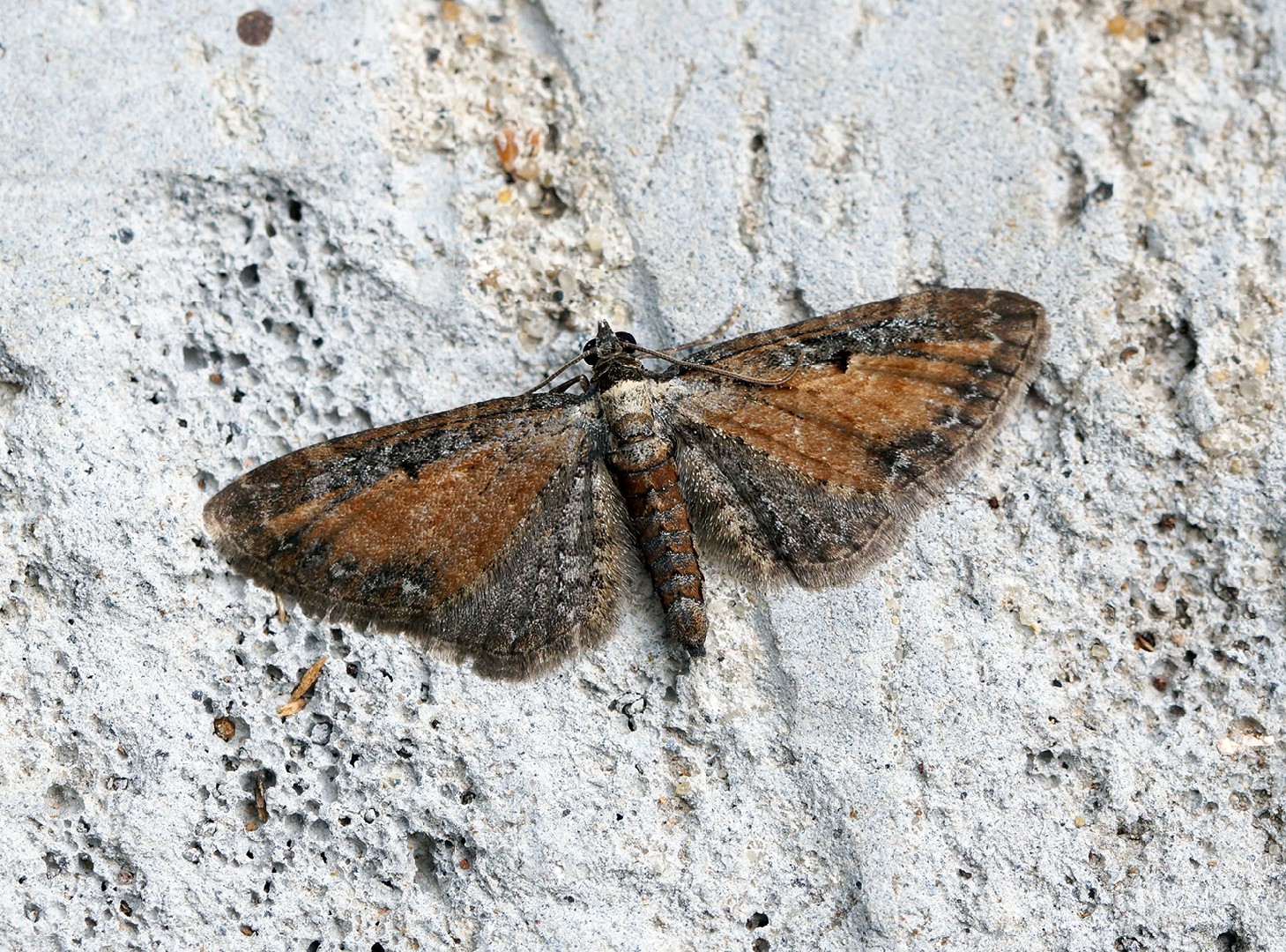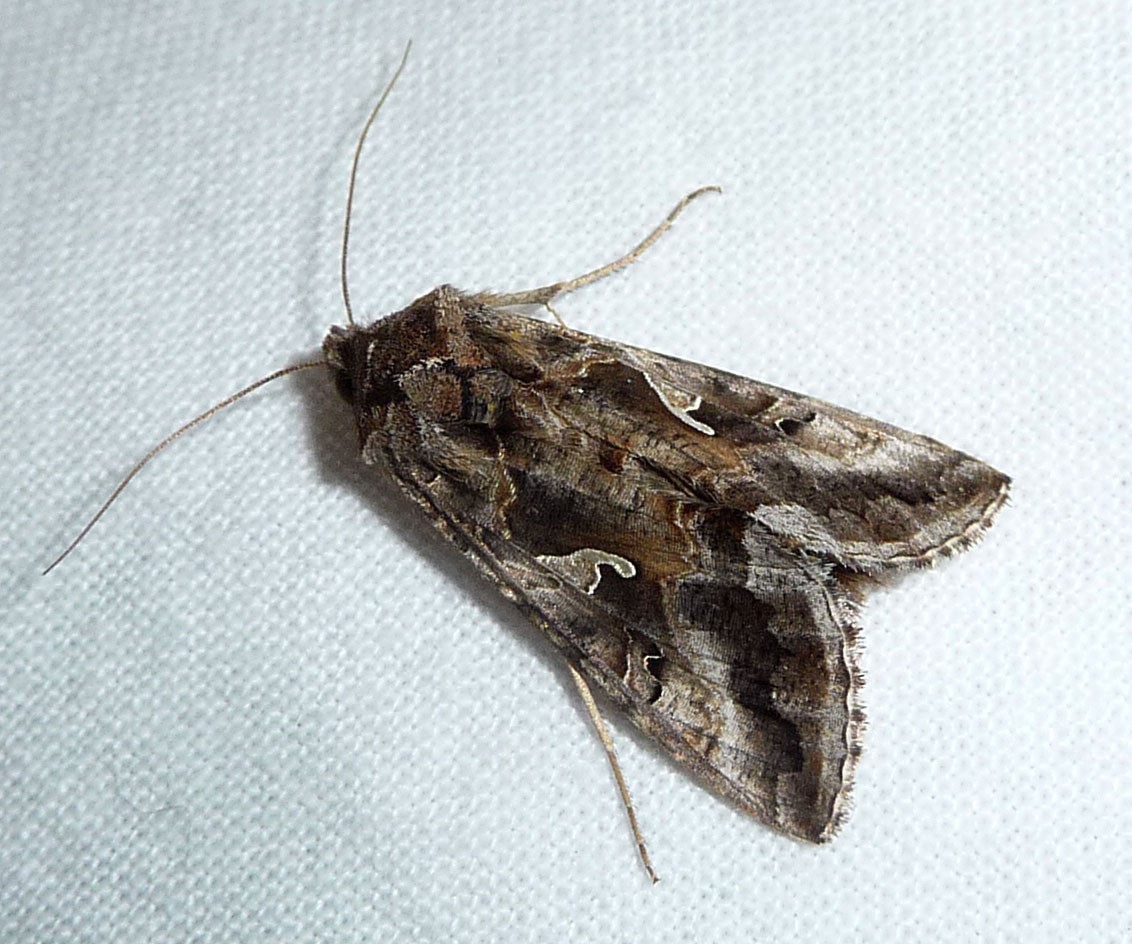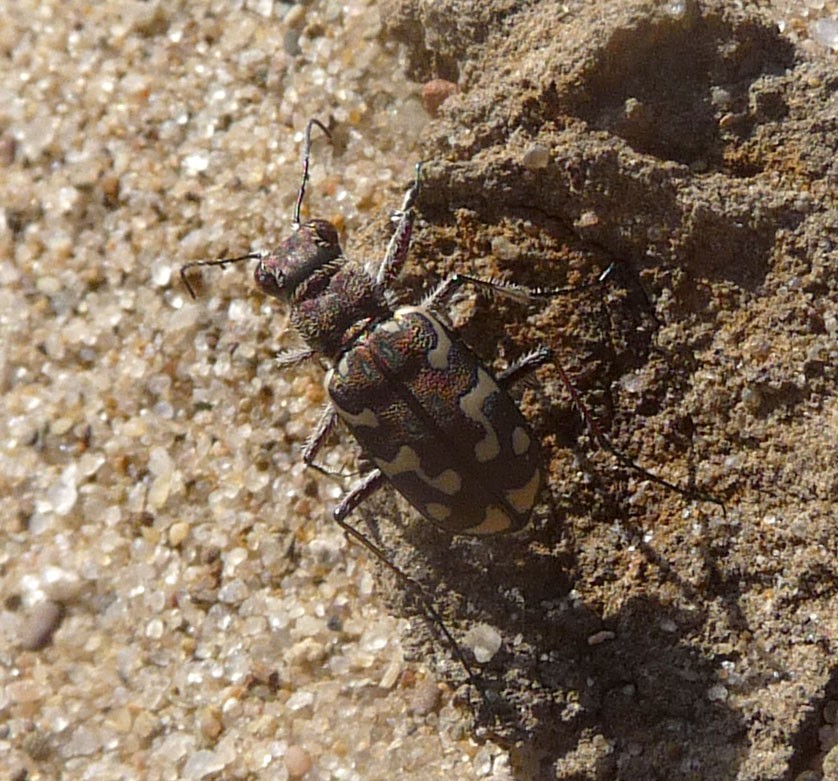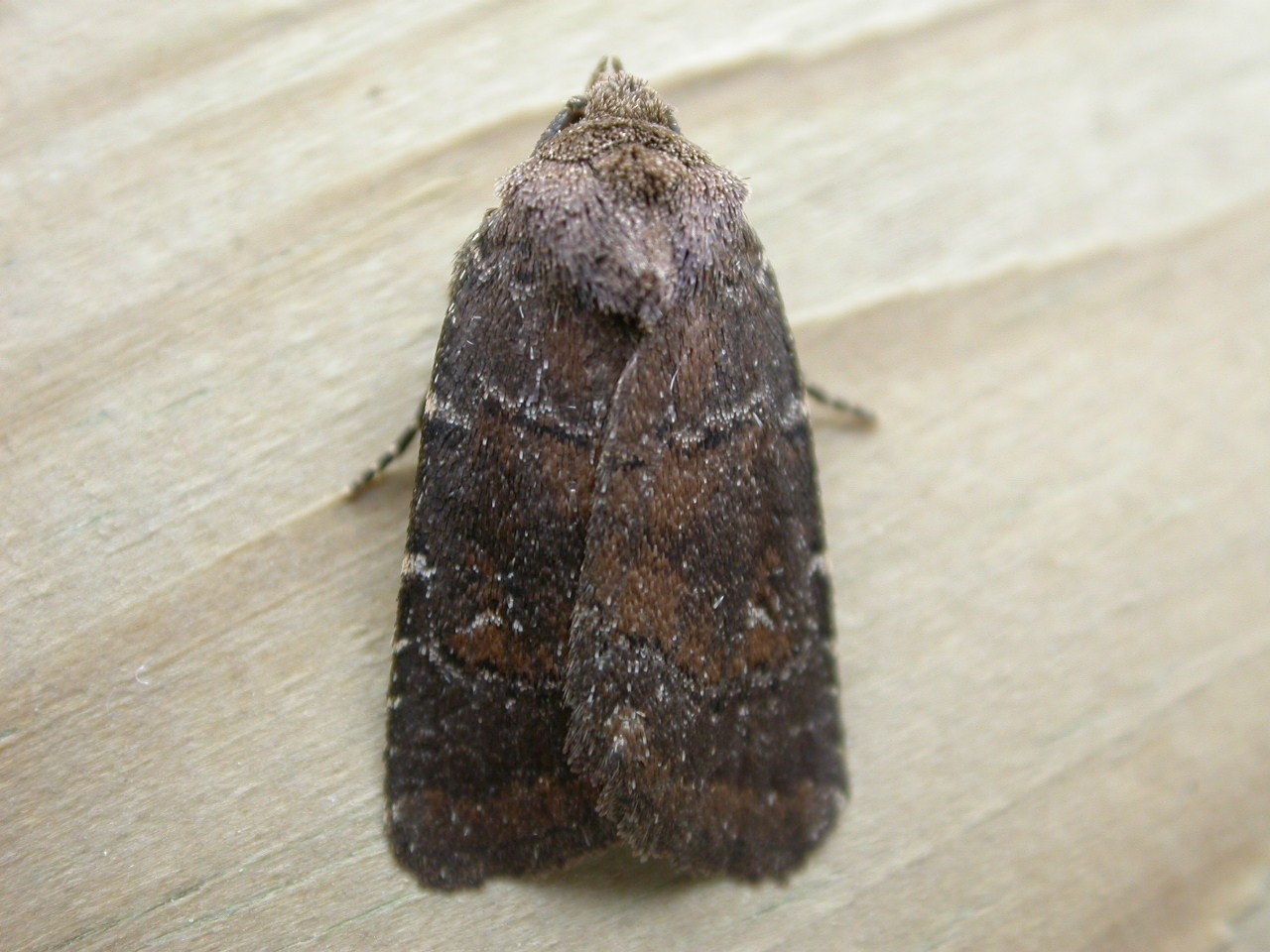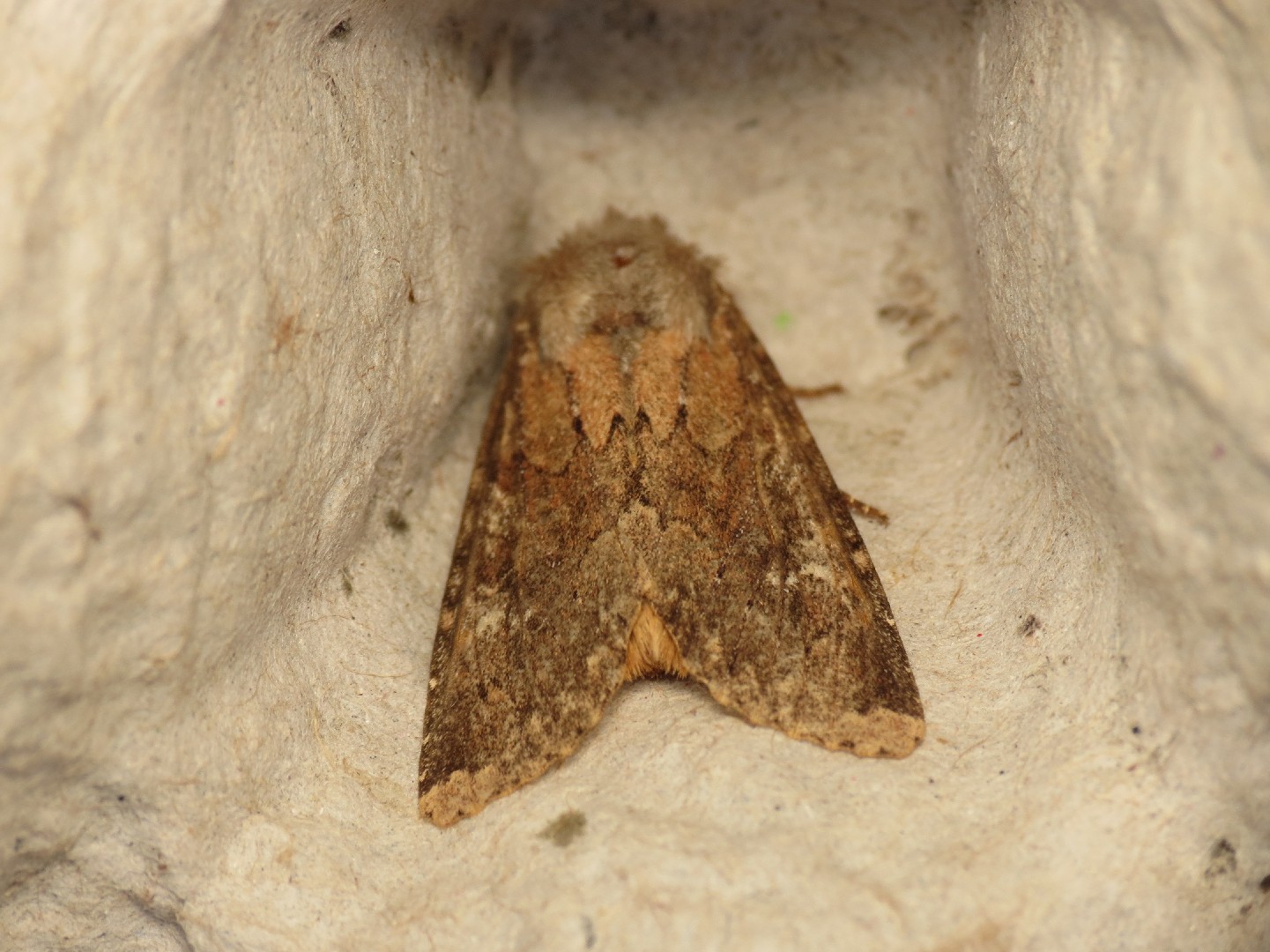Top 20 Most Common Insects in Gjovik
Insects, with their unique characteristics and diverse habitats, paint a colorful tapestry across Gjovik's landscape. Shaped by geographical variations, Gjovik hosts an intriguing mix. Beyond being a meal for birds or a nuisance, these insects play crucial roles, whether as environmental regulators or vital pollinators. Unravel with us the 20 most common ones, in their element, flourishing amidst Gjovik's varied environments.
Most Common Insects
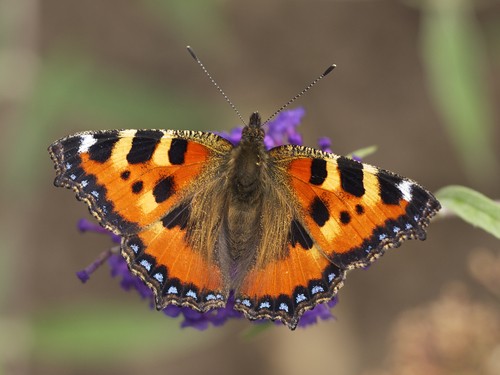
1. Small tortoiseshell
Small and colorful, small tortoiseshell (Aglais urticae) is the national butterfly of Denmark. However, it is capable of surviving anywhere the common nettle leaf may be found, which the larvae of this species depend on. Once among the most common butterflies in Europe and temperate Asia, this species is experiencing rapid declines for reasons still being investigated.
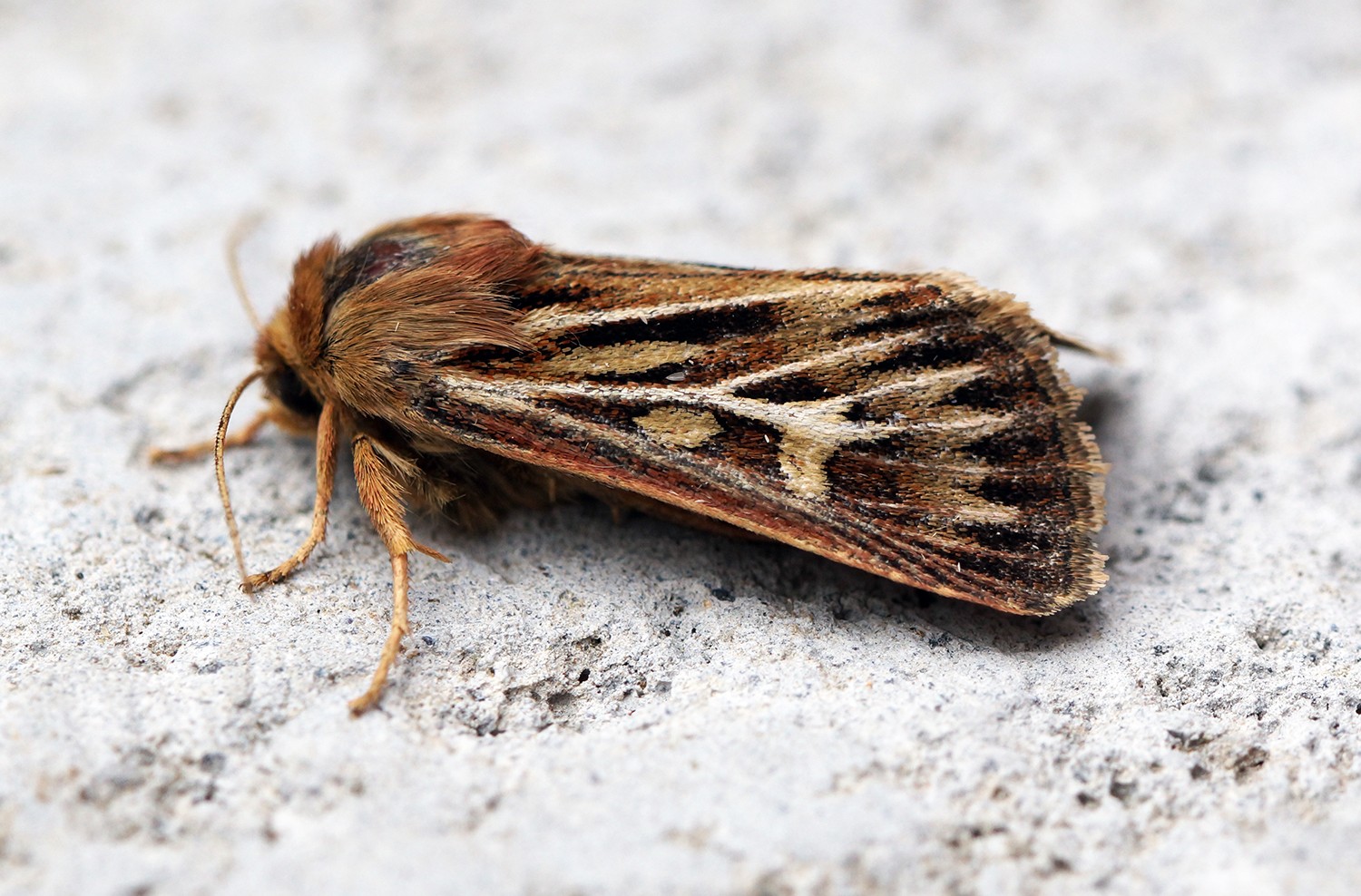
2. Antler moth
This species is unusual for a noctuid in that there is marked sexual dimorphism. The male has a wingspan of 27–32 mm but the female is much larger with a wingspan of 35–39 mm. The forewings are brown, speckled with black and marked with a bold white branched basal streak which gives the species its common name. The hindwings are dark brown with a white fringe. 
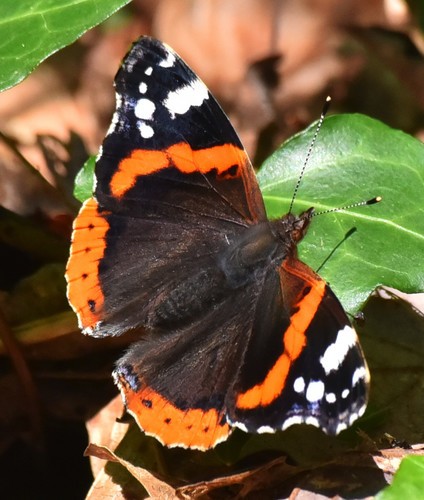
3. Red admiral
Red admiral (Vanessa atalanta) is a visually striking species of butterfly. Unusually territorial, males will compete for choice areas, and females will only mate with males that maintain their own territories. This butterfly is known for being particularly patient with human interactions, even to the point of perching on clothing or flesh.
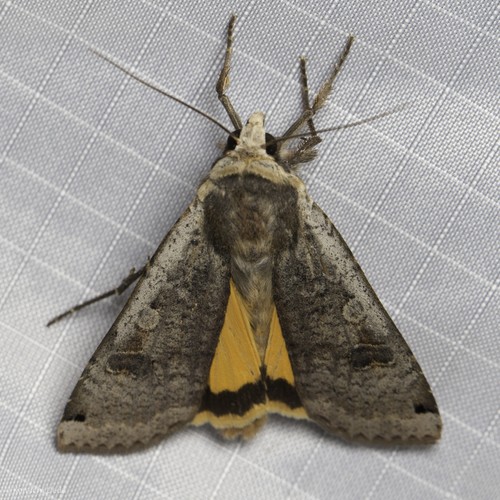
4. Large yellow underwing
An unusually large and heavy species of moth, large yellow underwing (Noctua pronuba) is dreaded by gardeners for the larvae's habit of causing fatal damage to the base of virtually any herbaceous plant. Large migrations occur some years, but how those years are determined is not yet known. Its contrasting colors (yellow-orange and brown) are thought to confuse would-be predators.
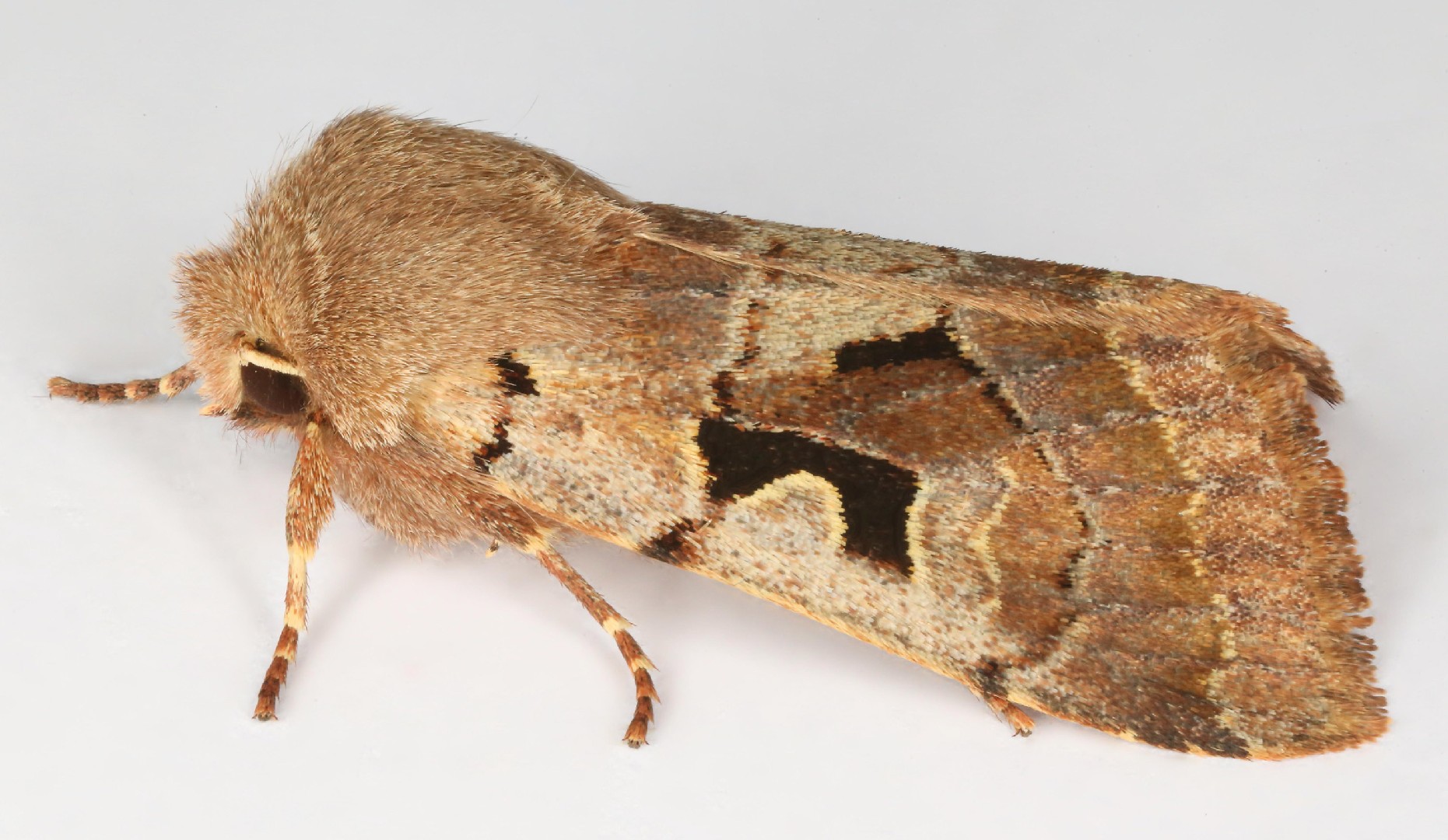
5. Hebrew character
The forewings of this species are greyish to rufous brown. The hindwings are grey. 
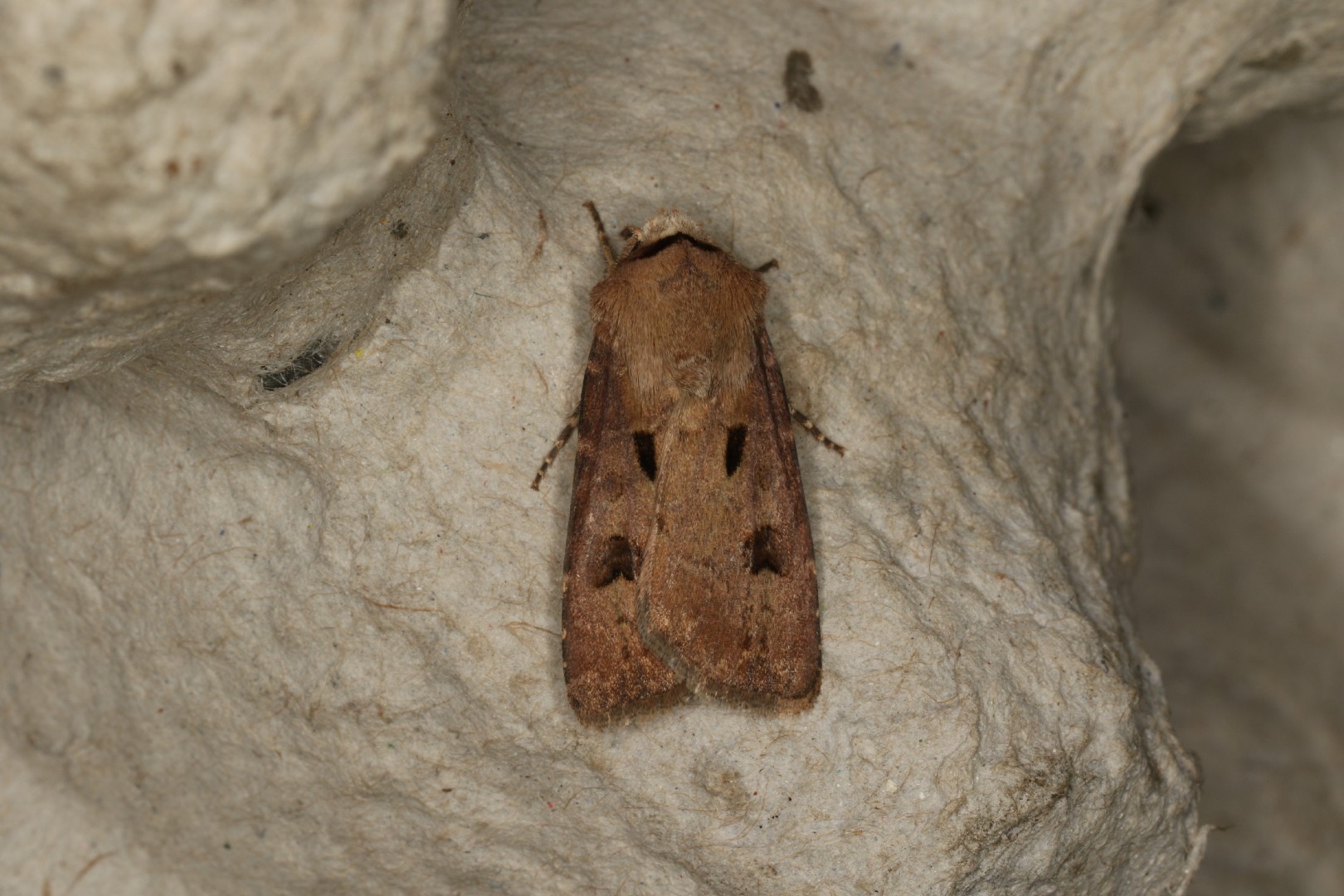
6. Heart and dart
The heart and dart (Agrotis exclamationis) is a moth of the family Noctuidae. The species was first described by Carl Linnaeus in his 1758 10th edition of Systema Naturae. A familiar moth to many, it is considered one of the most common of the European region. It occurs throughout the Palearctic realm from Ireland to Japan. This is a quite variable species with forewings ranging from pale to dark brown but always recognizable by the distinctively shaped dark stigmata which give it its common name. The wingspan is 35–44 mm. The hindwings are whitish (compared with other common Agrotis species, the hindwings of this species are usually paler than in heart and club but darker than in turnip moth). This species usually has a dark area at the front of the thorax, visible as a horizontal bar when viewing the moth head on. The differences are not consistent however; they are highly variable in both colour and markings, and identification of atypical or worn examples may prove impossible without examination of genitalia. See Townsend et al. This moth flies at night from May to July and is attracted to light, sometimes in large numbers. It also frequently visits nectar-rich flowers such as Buddleia, ragwort and red valerian. The larva is brown above and grey below and feeds on a variety of plants, both wild and cultivated (see list below). This is one of the notorious cutworms and often severs or fatally damages plants at the base. The species overwinters as a full-grown larva in a chamber in the soil before pupating in the spring. ^ The flight season refers to the British Isles. This may vary in other parts of the range. 
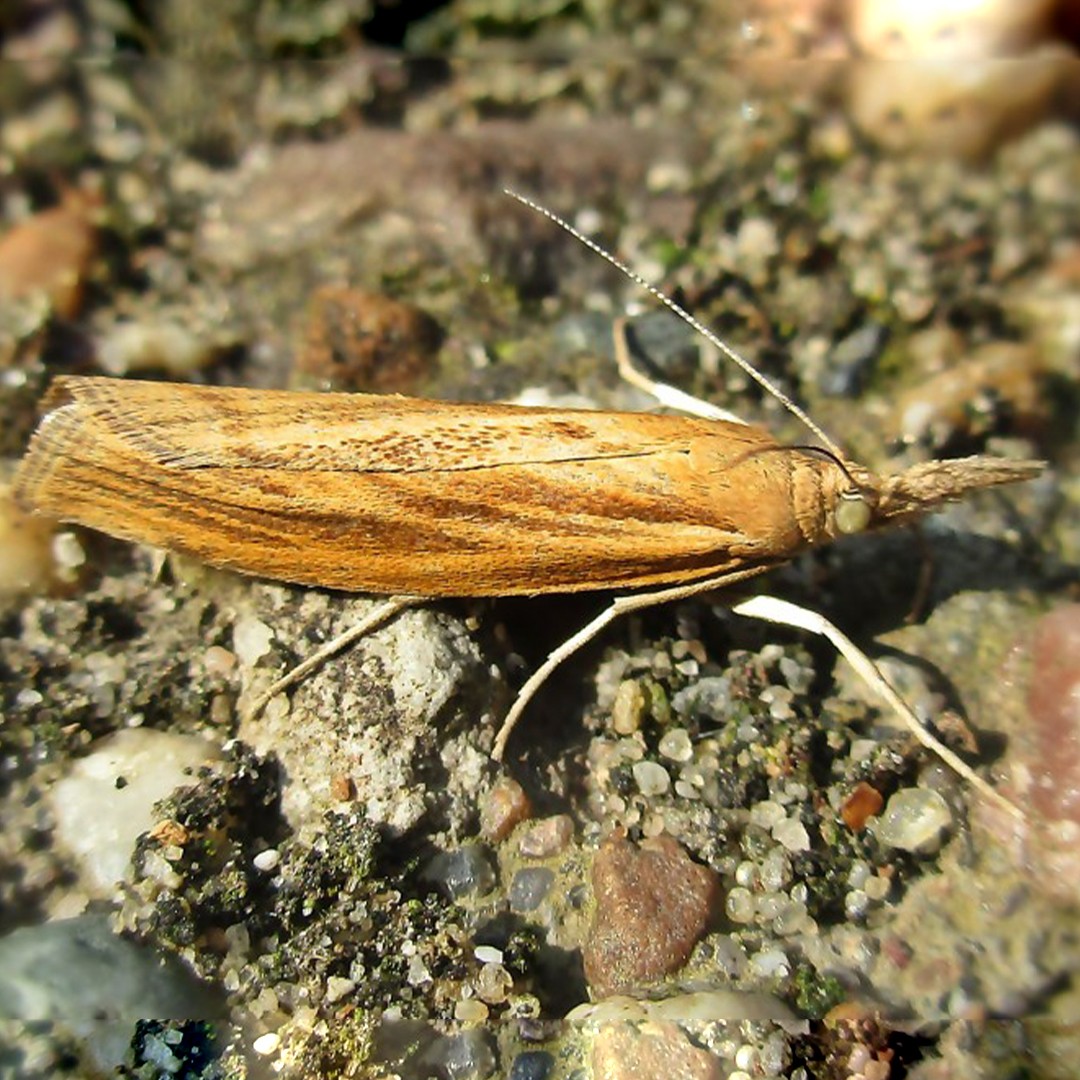
7. Common grass-veneer
Agriphila tristella is a species of moth of the family Crambidae. It is found in Europe and east across the Palearctic. The wingspan is 22–30 mm.The face has a short cone.Forewings are pale or deep yellow-ochreous, often mixed and sometimes wholly suffused with dark brown ; median vein and lb pale or whitish ; second line indistinctly brownish, acutely angulated, sometimes obsolete ; sometimes some indistinct blackish terminal dots ; cilia shining whitish - ochreous to fuscous. Hindwings are grey.The larva is pale ochreous or brownish ; spots large, blackish-brown ; head and plate of 2 black : The moth flies from June to September depending on the location. The larvae feed on various grasses, such as Poa and Deschampsia species. 
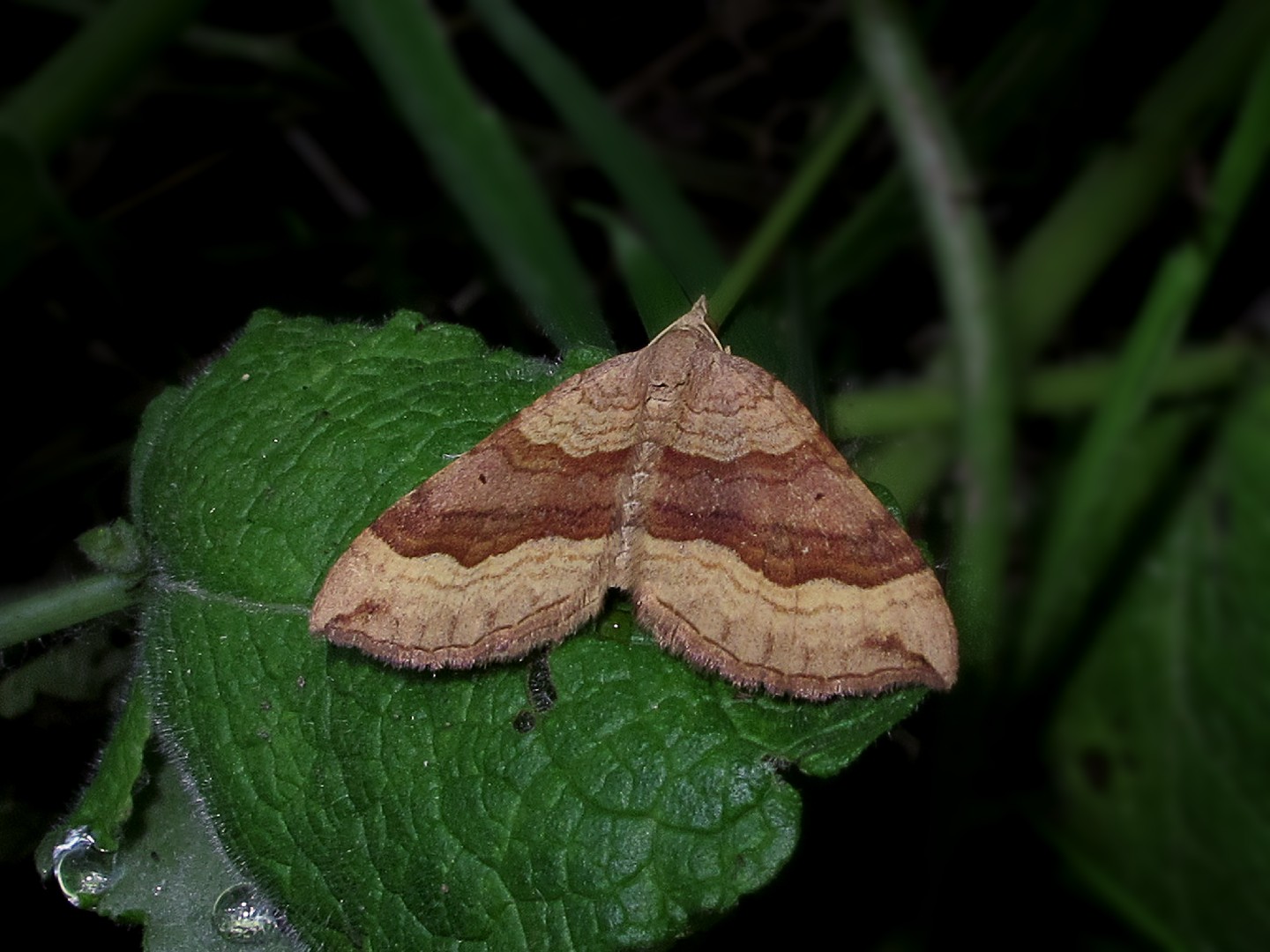
8. Shaded broad-bar
The wingspan is 25–30 mm. The length of the forewings is 16–19 mm. The colouration is highly variable. It ranges from yellow brown, light brown, red brown and grey brown to grey. The forewings have several, mostly parallel, undulate crosslines. There is a prominent broad dark brown band in the median field comprising two distinct shades, the middle being greyer, the edges more ferruginous. In addition, the females are usually brighter yellowish than the males, but both sexes vary in tint. There is also a small apical streak. The hindwings are pale with faint crosslines. 

9. Dark marbled carpet
The wingspan is 2.5 - 3 cm. The ground colour of the forewings may show whitish, grey, black or brown tints but the colour is extremely variable and there are strongly darkened forms. Characteristic is the protruding post medial line on the front wings, which usually reaches the post discal wavy line or interrupts it. 
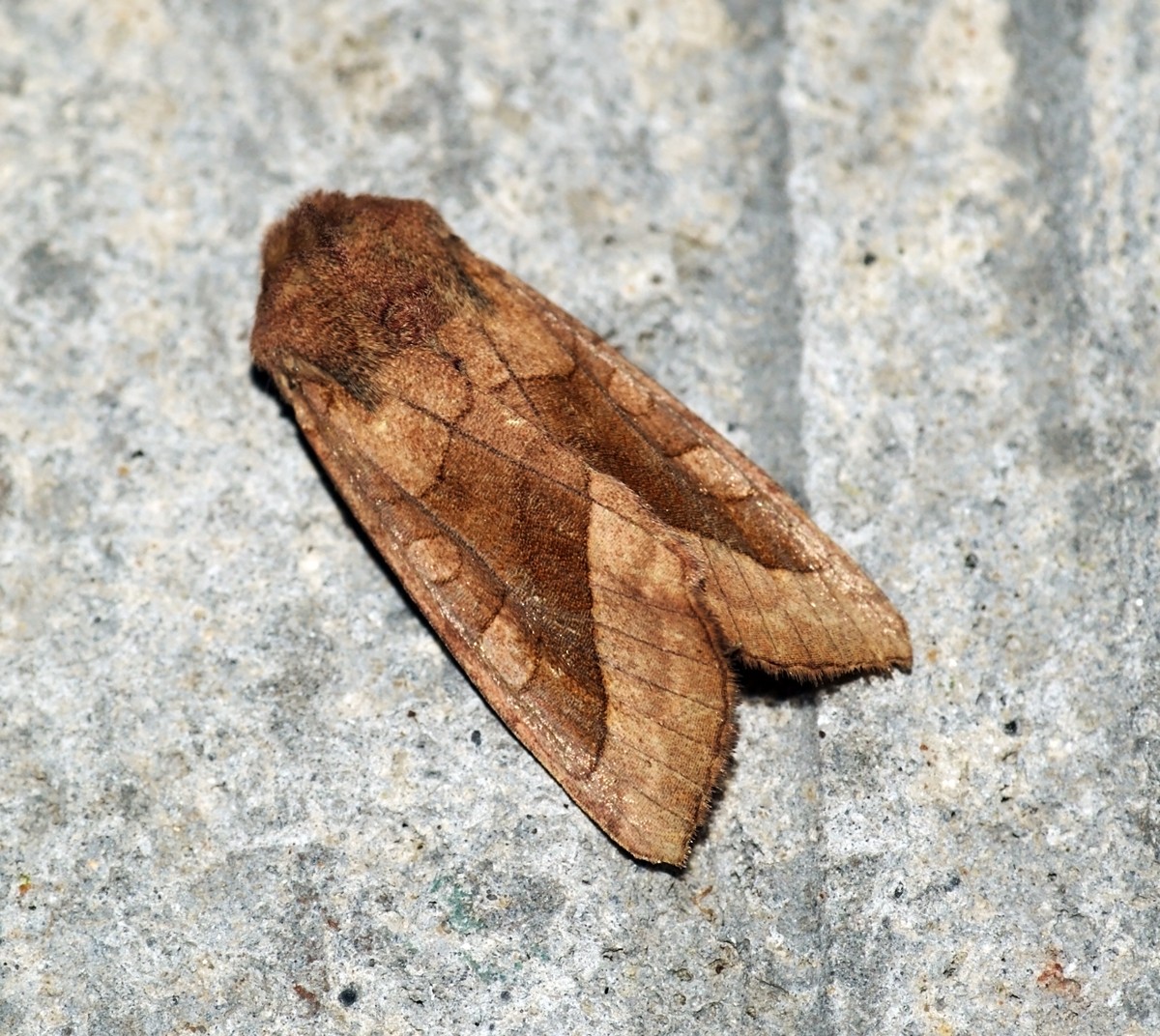
10. Rosy rustic
The Markeule (Hydraecia micacea), also called Uferstauden-Markeule or Ufersumpfhochstauden-Markeule or Hopfenmarkeule, is a butterfly (moth) from the family owl butterflies (Noctuidae). Basically, it is a complex of three very similar Central / Northern European species whose independence was only recognized in 1952 and 1965. The old trivial name Markeule could therefore designate copies of all three species, since the species have not been distinguished; in practice, however, it has been restricted to Hydracea micacea (see Lepiforum). A fourth very similar species has its main distribution in Siberia to the Far East. The three European species are very difficult to differentiate on the basis of the external characteristics of the moths.
More
